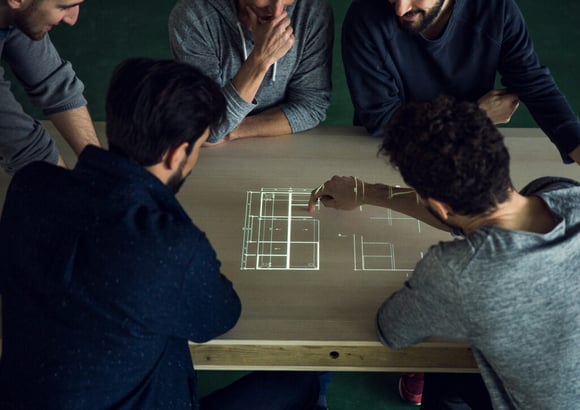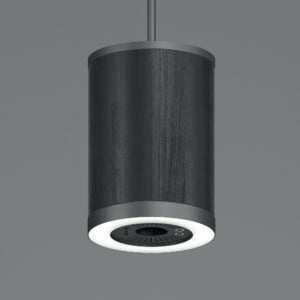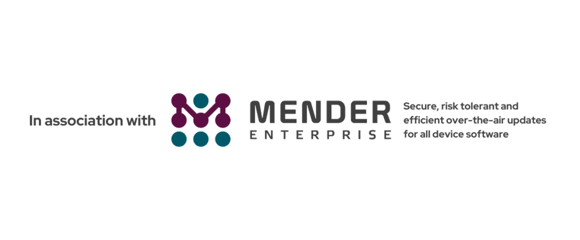The Device Chronicle interviewed ABUSIZZ CTO Andreas Sansano to learn about the convergence of digital and the physical in smart furniture in commercial settings. Engineers and designers are taking wood, making lamps and tables that come alive when connected to digital sensors, audio advances and IoT gateways.
ABUSIZZ is a Swiss company that offers what it calls a new kind of interaction for those that want to convince. Targeting banks, automotive showrooms and hotels, among many other sectors and use cases, the company offers smart furniture solutions based on IoT to provide intelligent lamps and tables that use AI, multiple sensors and analogue technologies such as wood resonance to improve a meeting experience between a group of colleagues or between a provider and their customer.
The smart furniture applications include interactive customer meetings in bank receptions and offices; business meetings optimised for communication and comfort in corporate boardrooms, and tables in automotive showrooms that assist customers understanding the features of vehicles they are interested in purchasing.
Frictionless smart furniture
Andreas begins the interview by saying that in the smart office, the underlying technology which itself is in a constant state of change should not be felt by the end user. Instead, it should enable the end user in a very frictionless way. So the ABUSIZZ engineers look to reduce UIs to a single button journey without the need for menus or configurations. Andreas admits that his team has a lively discussion about what kinds of services the company’s smart tables and lamps should deliver. They came to a realisation that on the one hand, the customers have the landscape software so there was no need for ABUSIZZ to reinvent the wheel. Instead their task was to harness the landscape of technology and package it in the way that people could come together to share an experience. “You must use the technology to simplify the meeting. So we allow the users to share whatever they want within reason from whatever device they want, there is no need to prepare an ABUSIZZ device to enable this. The user just connects and starts sharing. It will appear and there is no friction.”
Hand gesture recognition in smart furniture
The engineers and designers at ABUSIZZ go a step further and look at how hands can be used for gesture recognition from the top down from the sensors on the ceiling. There is an art to creating the perfect experience Andreas explains: “You must not draw the attention of the participants from the presentation to the gestures of the users sitting around the office table.” Andreas continues to elaborate on the use of AI and machine learning in the smart office. He says AI complements IoT and its use is necessary to cover all situations. It is much better than a human engineer trying to assess all the possibilities and the next step a user will want to take in the interaction.
Wood with digital benefits
ABUSIZZ engineers are also integrating the engagement of Internet connectivity and personalised services into the physicality of wood so their tables can produce enhanced meeting experiences based on comfort and focus. The company uses a range of digital technologies with the analogue furniture.

Technologies applied in smart furniture
Projection and digital signage involves the active streaming of content or consumption of content. There may be an end user device involved or not depending on the experience and the setting. Hand recognition gestures use sensors in digital photos, infrared, lasers to figure out what is going with dimensions in terms of hand sizes. Innovations in audio acoustics are also used by the IoT system to detect “dirty” surround noise at a table. Their special speech enhancement module makes the sitter at the table more comfortable. Andreas says “We can create a bubble of comfort for the user at the table. The wooden frame’s natural resonance is used to improve the ambience.” The engineering and design team combine touch, sound, visuals and design.

Moving at a fast pace
Andreas also points to the fast pace of technology development and how that requires fast adaptation by his engineers and designers. For this reason, product extensibility and frictionless, secure and robust updates in the background. Devices need to be updated every night and Andreas is adamant that this must happen away from the end user or the customer. Mender.io can do everything seamlessly in the background, and the devices just need one restart. “It’s just 10 seconds of your life providing you new features and new functions. The consumer does not need to see the updates. There is also no need for us to be physically there to access the device to perform the update, the device pulls the update from the Mender server. The device is ready for the next big thing and not disturbing the user journey.”
Keeping up with changing needs
Connectivity is not a barrier in the smart office, for Andreas, the main issue is adapting and upgrading the technology in fast cycles to meet changing customer needs. ABUSIZZ considers itself as a pioneer in this field and that brings pressure in itself. “The device needs to be smart so they can run for themselves and this is where we are challenged the most. We don’t want data storage and connectivity issues. We need to be there if the customer wants to integrate with Philips Hue, Alexa or Google Assistant, we have to react and next month the customer has it.”
In conclusion, Andreas believes that with IoT, the customer purchases a system and they expect it to get smarter over its lifecycle. So as a provider of these systems, you must have control of the entire technology stack be it the hardware, software and the sharing system. “There is more responsibility with IoT than other digital technologies but you can deliver a better experience which is demanded.”
Learn about frictionless onboarding experiences in IoT .

